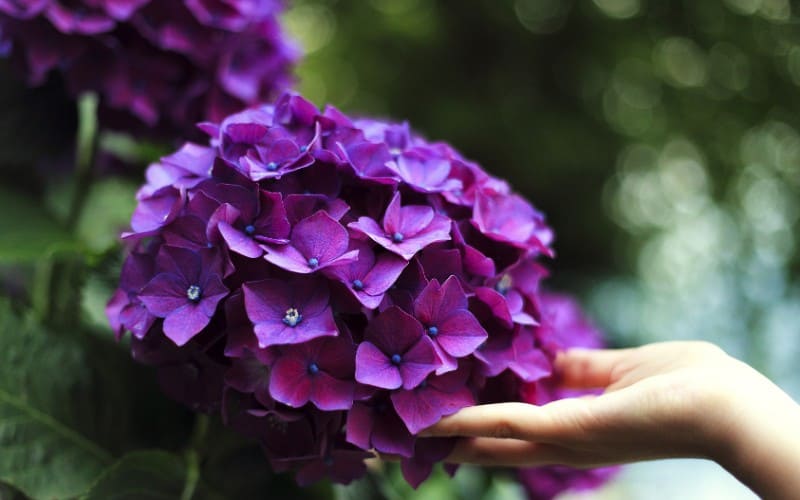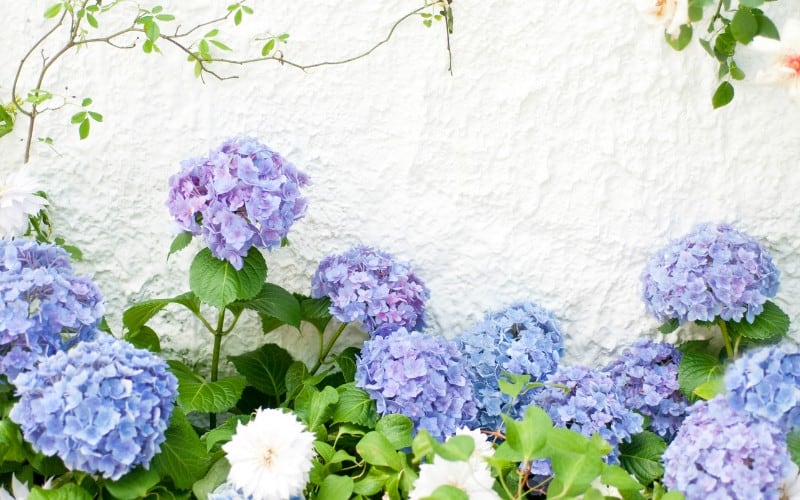Nothing looks more beautiful than hydrangeas with its attractive flower heads, beautiful foliage, and ever colorful blossoms sitting pretty in a summer garden. Hydrangea plants draw attention and beauty to any landscape they are planted on.
Apart from their attractive bark and foliages, gardeners grow them as insect repellants because of their versatile nature and ability to resist insects and diseases.
Everyone seems to love hydrangeas because of their easy-going nature as they require little care other than pruning. But even at that, one pruning move at the wrong timing could ruin the blooms of your lovely plants. So people always want to know the best time to prune hydrangeas without cutting off next year's bloom.
There are different kinds of hydrangeas, and as such, there's no one method that applies to all. However, the type you have will determine when to prune hydrangeas. Read on to find out everything you need to know about pruning hydrangeas.
Table of Contents
When to Prune Hydrangeas

The different kinds of hydrangeas available can feel confusing when trying to determine the best time for pruning. For example, when you might prune an 'Endless Summer' hydrangea differs from when you should cut back 'Snowball' hydrangea.
The usual reasons for this confusion are the plant's failure to bloom in summer and its dead-looking appearance in winter. Hydrangeas are tough woody plants that can handle pruning but may result in a lack of flowers if done at the wrong time.
However, pruning is beneficial to these versatile plants as it helps sheds off the fading appearance of its blooms and reduces the size of the tall shrubs. It also helps to increase and shape the size of the flowers.
So, when do you prune hydrangeas? Well, not all hydrangeas should be pruned at the same time. It depends if it blooms in late summer.
Some hydrangeas bloom on new growth during the current year later in the season after July and should be pruned before they begin active development in early spring or late winter. For example, the "snowball" types, such as Annabelle.
Others bloom on old growth and are usually the earliest to flower – before July, they are mostly blue and should be pruned in summer, once they have finished flowering. These blooms are called old-growth because they flower on what's referred to as an "old wood" — growth from the previous year.
If these types of hydrangeas are pruned in spring, you might cut off the dormant flower buds and prevent new sprouts from coming up. But when you prune right after the end of the bloom's life cycle, you allow the plant time to set new sprout buds for the next year.
Examples of such hydrangeas are the bigleaf hydrangea (H. macrophylla), Nikko Blue, pink- and blue-flowering cultivars, Oakleaf (H. quercifolia), etc.
So, how do you know which ones you have? If you still have doubts about which variety you have, don't worry. Even pro gardeners can be confused about when to prune hydrangeas. We have put together a few lists of some of the different types of hydrangeas and when to prune them.
Read Also: Best Time to Prune Forsythia Plant
When to Prune Different Kinds of Hydrangeas

Blooms on old wood
- Oakleaf hydrangeas (H. quercifolia cvs., Z 5–9)
- Bigleaf hydrangeas (Hydrangea macrophylla cvs., USDA Hardiness Zones 6–9)
- Bigleaf hydrangeas (H. Serrata cvs., Z 6–9)
- Bigleaf Hydrangea (Hydrangea macrophylla)
The best way to decide if your hydrangea blooms on old wood are to notice when it flowers. Hydrangea that blooms in this pattern usually begins flowering in early summer and dwindle by midsummer, though colors may appear from time to time.
During early fall or late summer are the best times these blooms gradually sprout as the days get shorter and temperatures cool off. The faded flowers can be trimmed away as they witter to tidy and maintain the plant's shape.
When most of the blooms are faded, it's time for proper pruning. The best pruning practice would be to use bypass pruners to prune the dead and weaker stems selectively.
To lessen the risk of pruning buds, be careful not to prune all the old wood because this is what serves as the basis for a new sprout that will keep blooming as the new growth reaches maturation.
It's also good to prune immediately the flowers start to fade off because the earlier you remove them, the quicker the shrub recovers to allow them to produce more and bigger blooms the next year.
The bigleaf hydrangeas are the most commonly grown hydrangea in Maryland. It consists of attractive flowers whose color changes along with the soil PH to colors such as pink, large blue, purple flowers, or red.
Howbeit, there are also a few varieties that also stay white. These hydrangeas include two forms: the lacecap and the mophead types. Both are pruned the same way.
Blooms on new wood
- Panicle hydrangeas (H. paniculata and cvs., Z 4–8)
- Smooth hydrangeas (H. arborescens and cvs., Z 4–9)
- Cut back these shrubs in late winter before new growth begins
The smooth hydrangea is a rounded shrub with foliages that bears a round pointy bleached color and shape. They are usually less problematic when it comes to blooming, though its white flowers aren't as visible as other hydrangeas. They include the popular cultivar H. arborescens 'Grandiflora,'
This shrub blooms on new wood. So pruning should be done in early spring to ensure plenty of growth for flowers. Gently remove any branches that have faded or injured over the winter, and lightly trim others to shape the plant.
Conclusion
Hydrangeas can be pruned at almost any season of the year; it depends on the type you have planted. Along with pruning, properly watering your hydrangeas is essential to helping them bloom better.
If you're still confused about when to prune hydrangeas, ask a professional gardener in your neighborhood to help identify your shrub.
But a rule of thumb is if the blooms are blue, it's a hydrangea that should be pruned in late summer, and if bears other colors, it is appropriately suitable for pruning in late in the summer.




